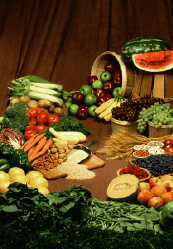Browning Solution Market: A Chemical Reaction That Improvises the Texture and Color Of Food
Browning is a procedure in which food changes into brown because of chemical reactions occurring within the food. It might be worthwhile or unworthy. In the browning procedure, customary alteration witnessed in food in the course of pre-devising, processing, or repository of food is the advancement of brown color. In the browning solution market, the degree of its appearance differs in some food substance. Therefore, the scale of reaction and the food item causes an imbalance in the food's color from pale yellow to dark brown or black.
Segmentation of Browning
- Enzymatic browning: This is an oxidative response that takes place usually in fruits and vegetables by the enzyme polyphenol oxidase, leading to them turning brown. For enzymic browning to take place, the action of enzyme and oxidation are required. So when the tissue is exposed to air, it causes brown-colored pigment melanin production considering the sequence of biochemical reactions. Usually, enzymic browning is a chemical reaction that includes polyphenol oxidase, catechol oxidase, and other enzymes that cause the origination of melanin and benzoquinone from organic phenols.
- Nonenzymatic browning: This is a procedure in which brown-colored polymer is forged in the food but devoid of the inclusion of enzymes. This can be further segregated into caramelization and maillard reaction. Caramelization happens in the course of escalated temperature therapy of varied kinds of sugar over their melting point, offering a caramel-like flavor. In the browning solution market, the Maillard reaction is a chemical reaction that occurs between the amine group of the free amino acid and the carbonyl group of decreasing sugar normally with the inclusion of heat. It is the browning of food upon heating or a repository due to the chemical reaction. The reaction manufactures flavor when the food is cooked.
The Market Insight
The global browning solution market was valued at USD 115.05 million in 2022 and is expected to grow at USD 197.92 million with a CAGR of 5.6% during the forecast period 2032.
Growth Drivers
Demand for processed and comfort food is escalating worldwide due to escalating population, altering lifestyles, and escalating disposable income. Browning solutions are broadly utilized in the making of processed and convenience foods to improve the visual intrigue and flavor of the food. For instance, in 2019, Kerry Group initiated a gamut of browning solutions for usage in meat products, ready meals, and snacks food. The aggregate of food service joints such as cafes, restaurants, and fast food vents is proliferating globally because of the growing demand for eating out.
To Get More Insights on Browning Solution Market, Request for a Sample Report
Recent Developments
In 2020, Cargill, Inc. launched a new line of de-oiled lecithin products, which are used as an emulsifier in browning solutions. The de-oiled lecithin products are made from non-GMO soybeans and are designed to improve the performance of browning solutions in various food applications.
To Conclude
Browning takes place especially in the course of manufacturing, processing, and repository of food. Browning is recommendable in some commodities such as bread crust, meat, coca, coffee, raisins, prunes, and so on, and even extends the shelf line. In the browning solution market, managing browning is a crucial factor to improvise the product value, to reduce post-harvest losses, and to sustain the food quality.


